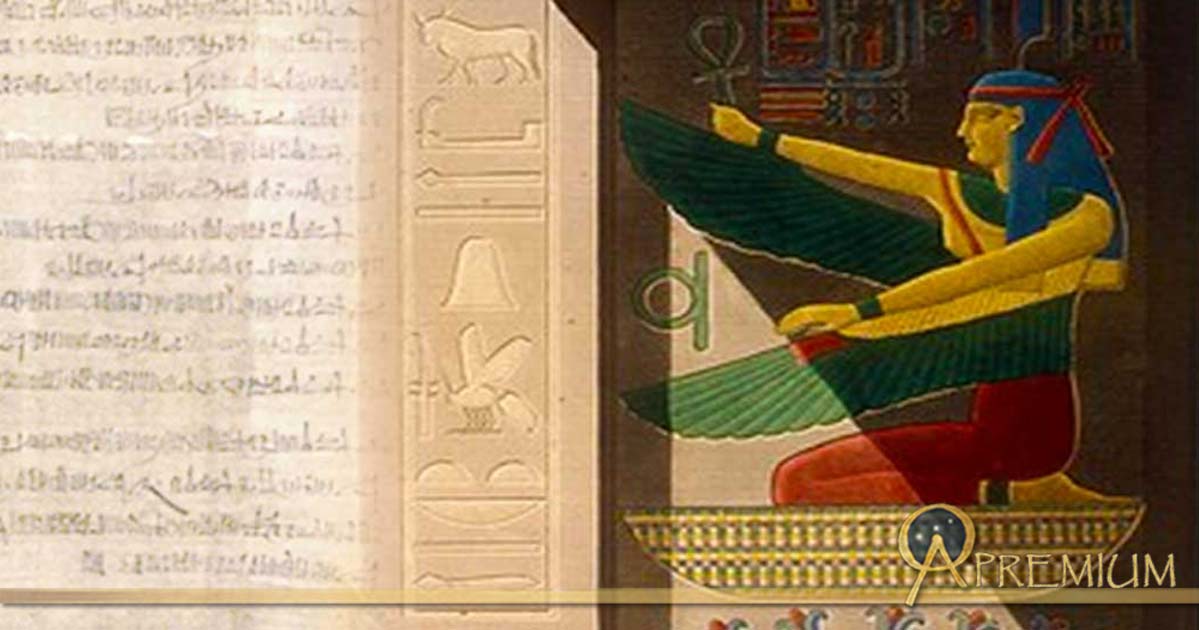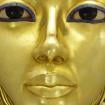The Egyptian Judicial System: Robust Pillar of Empire
Down the millennia, right from the hoary Narmer Palette to the grand reliefs on the walls of the magnificent temples of Ramesses II and that of later rulers; Egyptian artistic canon depicted the classic and symbolic ‘smiting’ pose in which the pharaoh was shown striking fear and awe in the hearts and minds of terrified enemies. It was, after all, the king’s bounden duty to eliminate the crippling and fearsome forces of chaos (I sfet) and maintain justice and order (M a’at). And so, in the daily functioning of the State, stringent and unsparing action against anyone who fell afoul of the law was an integral part of the ancient Egyptian judicial system.

Wall relief of Maat in the eastern upstairs part of the temple of Edfu, Egypt. Ma’at was associated with justice and the law in ancient Egypt. (Rémih/CC BY-SA 3.0)
Eyebrows weren't raised when corporal punishment was mentioned; for people were accustomed to it from childhood. Scribe Amenemope certainly followed this course in letter and spirit when dealing with his young charges; for he states matter-of-factly: "A boy's ears are upon his back. He only listens when he is being beaten." As with the multitude of gods who judged the souls of the dead rigorously in the Hereafter, the Egyptians were merciless in dealing with criminals while they lived. In the adult world, depending on the gravity of the crime one committed: impalement, drowning, decapitation, burning, or being thrown to crocodiles—were some of the brutal ways in which one could breathe his or her last.
But, to be sentenced to heavy labor was akin to a living death, as the unfortunate person could wind up working for several years in gold or turquoise mines abroad under the harshest, most pitiless conditions imaginable – many never made it back home alive. Exile was the prescribed form of punishment for grave crimes. Few examples of royal clemency from the early periods of Egyptian history survive. The evidence at hand mostly comprises literary works – like ‘The Story of Sinuhe’ that is set in the aftermath of the death of Pharaoh Amenemhat I, founder of the 12th dynasty. The protagonist, Sinuhe, received a pardon from the pharaoh which paved the way for his return from exile.
Essential Law Enforcement
Exacting local officials and the Argus-eyed police force ensured the observance of law, prevention of criminal activities, and the swift apprehension of wrongdoers. These authorities followed several protocols in their efforts to solve crimes, much as is done in our day and age. Some of the investigative approaches included gathering circumstantial evidence, clues against suspects, reviewing public records and using physical coercion whenever it was deemed necessary. The objective was to ascertain the truth; but if that failed, at least a confession was a real possibility. Often, the witness or defendant was subjected to a round of beatings before the administration of an oath; and a stele in the British Museum hints that this treatment worked rather effectively: "I am a man who swore falsely by Ptah, Lord of truth, and he caused (me) to behold darkness by day."

Excerpt from the ‘Book of the Dead’, written on papyrus and showing the "Weighing of the Heart" using the feather of Maat as the measure for the counter-balance. Created by an unknown artist C.1300 BC (Public Domain)
Dispensing severe forms of punishment rested solely on the pharaoh or the Vizier (prime minister), who exercised certain powers on his behalf. One account relates to how King Khufu heard of a magician named Djedi, whose specialty it was to rejoin decapitated heads. The Westcar Papyrus reveals that the monarch declared: “ Let a criminal who is in gaol be brought to me and his sentence be executed!” If Djedi failed to prove himself, the condemned man’s eventual sentence would be fulfilled, albeit much ahead of time…
This is a free preview of an exclusive article from Ancient Origins PREMIUM.
To enjoy the rest of this article please join us there. When you subscribe, you get immediate and full access to all Premium articles, free eBooks, webinars by expert guests, discounts for online stores, and much more!
MORE
- The Truth About Lie Detection in Ancient and Modern Times
- The Bizarre Importance of Bleeding Bodies in Medieval Trials
- Trial by Ordeal: A Life or Death Method of Judgement
Top Image: Deriv; winged Ma'at kneeling over lilies of Upper Egypt. Scene from tomb of Ramses III (Public domain) and script from the Abbott Papyrus (Captmondo/CC BY-SA 3.0)
By Anand Balaji





















Comments
I don't know if this interests you or not, the background of Waltari's book Sinuhe, which he talked about in his biography.
It's hilarious to read about his agony and strained relationship with Sinuhe, the physician in his book The Egyptian.
"The Egyptians have started to harrass me, they force themself in my thoughts and while I'm asleep they force themself in my dreams, they don't give me one moment of peace, although they have been dead for ages and ages. The worst one of them is Sinuhe; he is a very dull and irritating man, who constantly harrasses me demanding I write a book about him."
"It's not that I would want to get rid of my Egyptians, they have become so familiar during all these years, that I know them better than my best friends. I am going to write a thick book about them when I have time, to get rid of them all."
"They sneak around in my room during the day making my dog growl at them. The dog can see them. It smells the Egyptians in our home, becomes restless and starts grunting.”
Waltari tried to go on a vacation to get rid of the Egyptians. The situation was the same when he got back home and the Egyptians harrassed him even more than before.
"Sinuhe in particular was very annoying, always leaning on my desk with his hand on the chin, begging me to start writing. So I gave in, went to Grandma's home with my dog, typing machine and a huge amount of paper."
"Before leaving I got a good omen: all the tulips in my room closed up and opened up, bowing before me. That's when I knew the work would succeed."
"The Egyptians camped around me in the attic. Sinuhe sat on the rug holding his chin, his face was depressed due to his age and the agony of his experiences, when he started to tell me stories from his life."
"I spent 24/7 with these ancient Egyptians and got to know them so closely, that I almost started to like them. Even Sinuhe, who earlier seemed so intrusive and irritating, became closer to me, despite him having several traits that I didn't understand at all and could not always accept.”
Waltari was often sick after listening how Pharao's guards threw people in the river as food for crocodiles etc. He cursed Sinuhe bitterly, who insisted on telling him these horrifying events, sometimes Waltari even suspected that Sinuhe enjoyed telling his stories.
"He reminded a lot of myself, he had weaknesses and mistakes that I also had, yet he had lived over 3000 years ago."
"Sinuhe was an old tired man, deeply depressed over everything he had witnessed. Yet he refused to answer my questions about life and death. Somewhere deep inside I had a feeling, that Sinuhe's bitter wisdom was bad for me, that there was still something that Sinuhe hadn't found, something I had to find before finishing.”
***
Personally I can recommend Mika Waltari's book "Sinuhe, The Egyptian".
It is filled with detailed information about Egypt, it's culture, it's religions, it's pharaos. Waltari didn't know much about Egypt, yet he wrote a detailed book about ancient Egypt. He didn't even correct the manuscript, he wrote it down like the Egyptians told him.
A hollywood-film was made based upon Waltari's book, but it was so boring that I fell asleep during the movie, but the book was so captivating that I couldn't stop reading it.
What do you think, have you read the book?